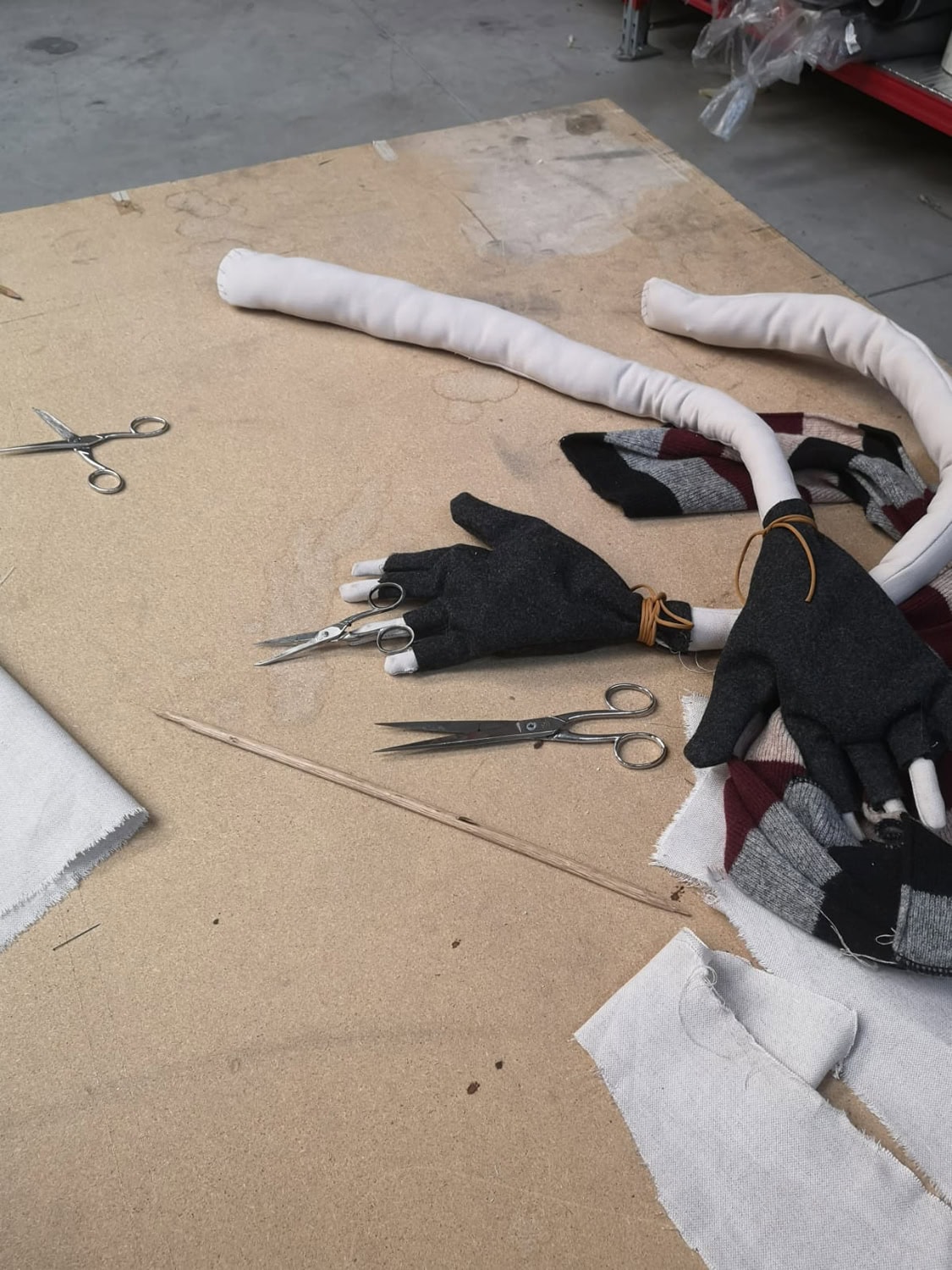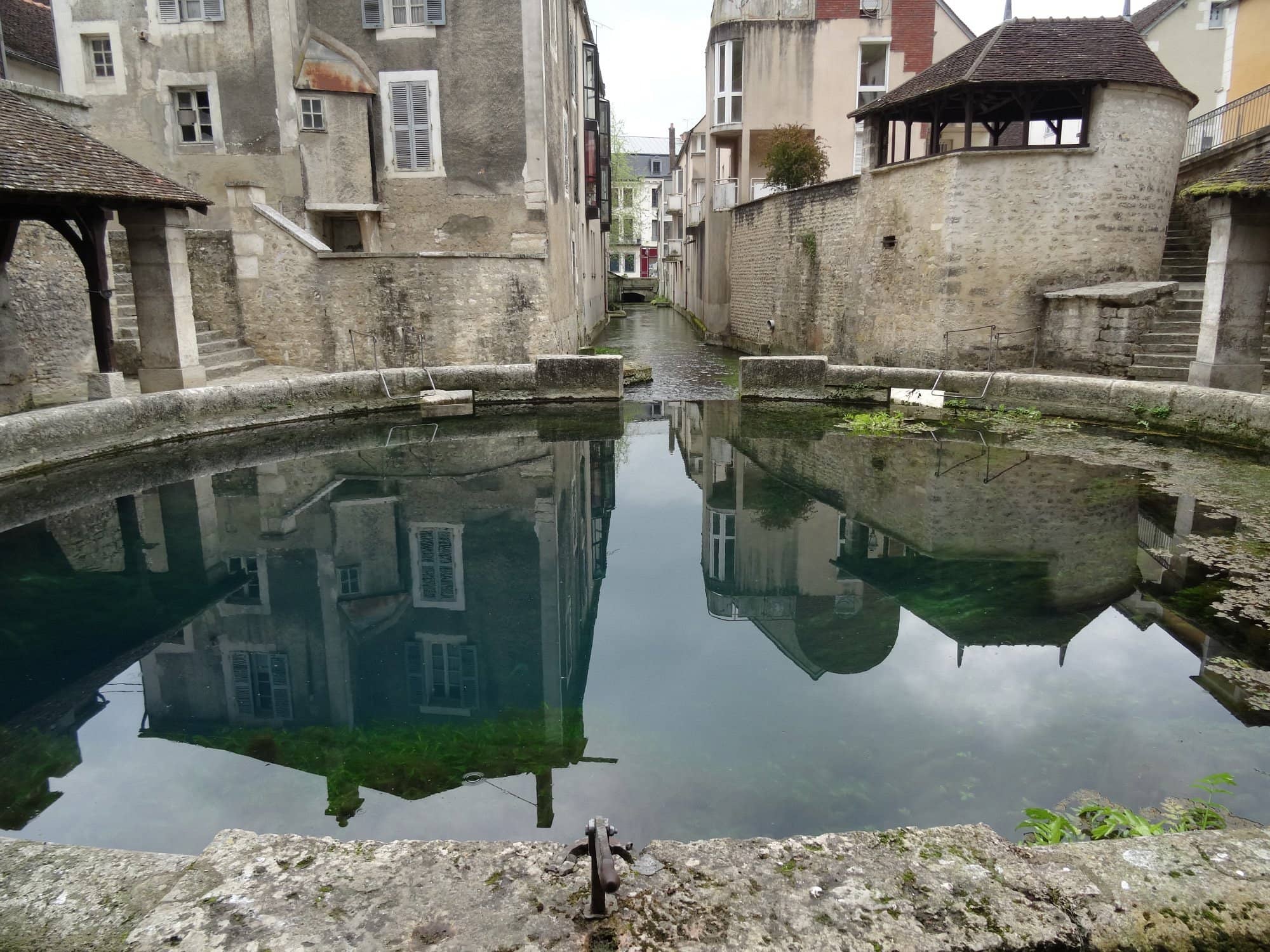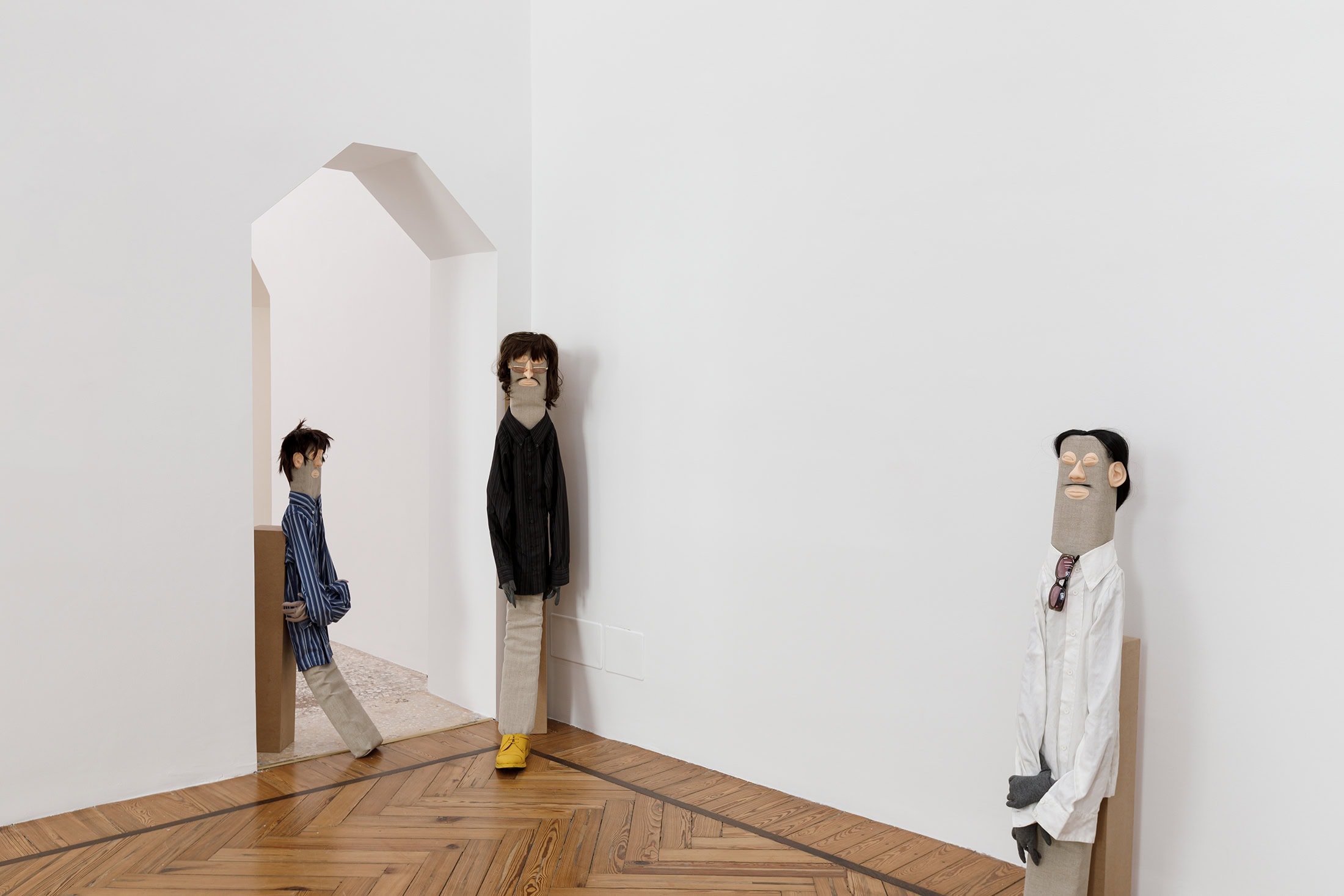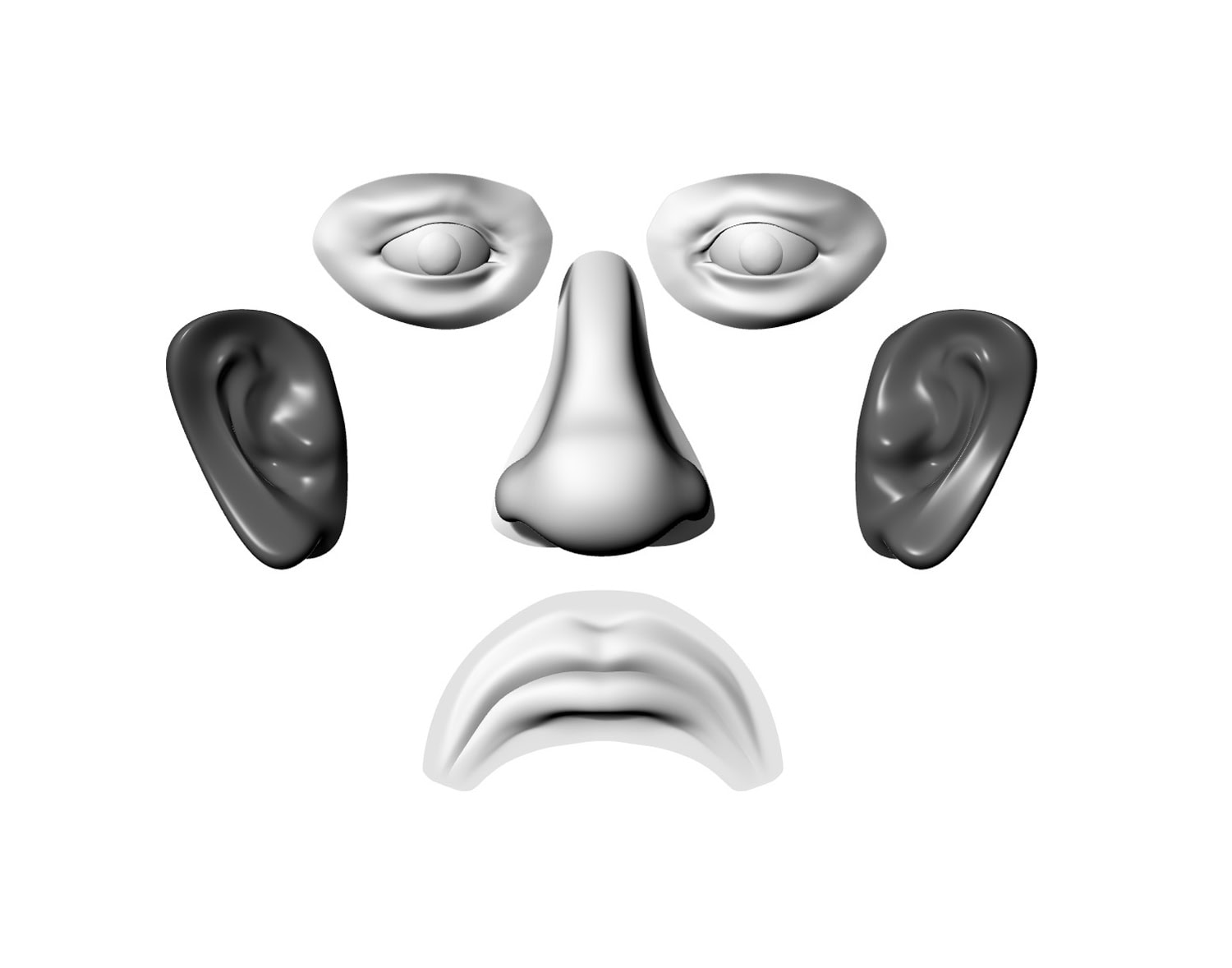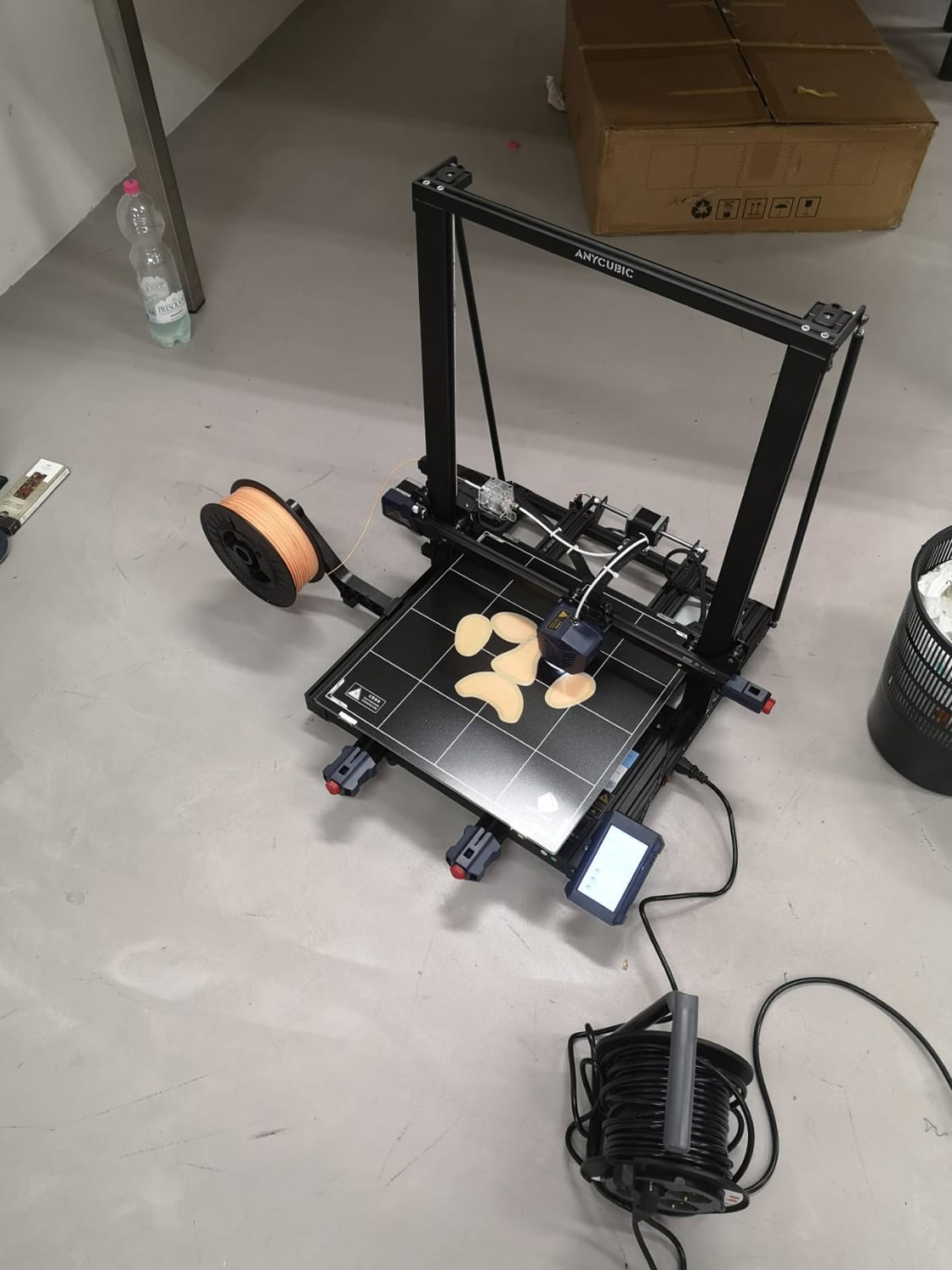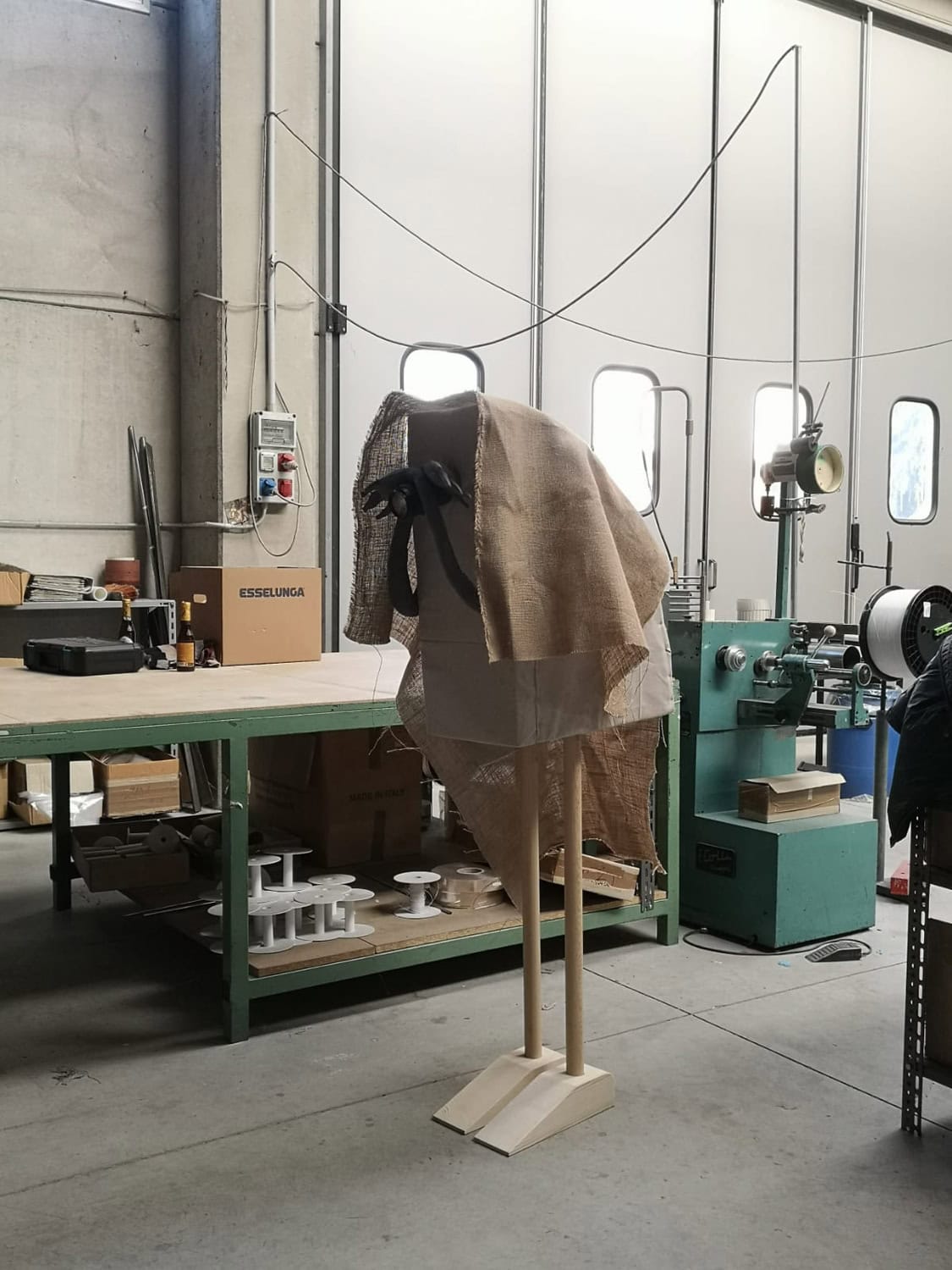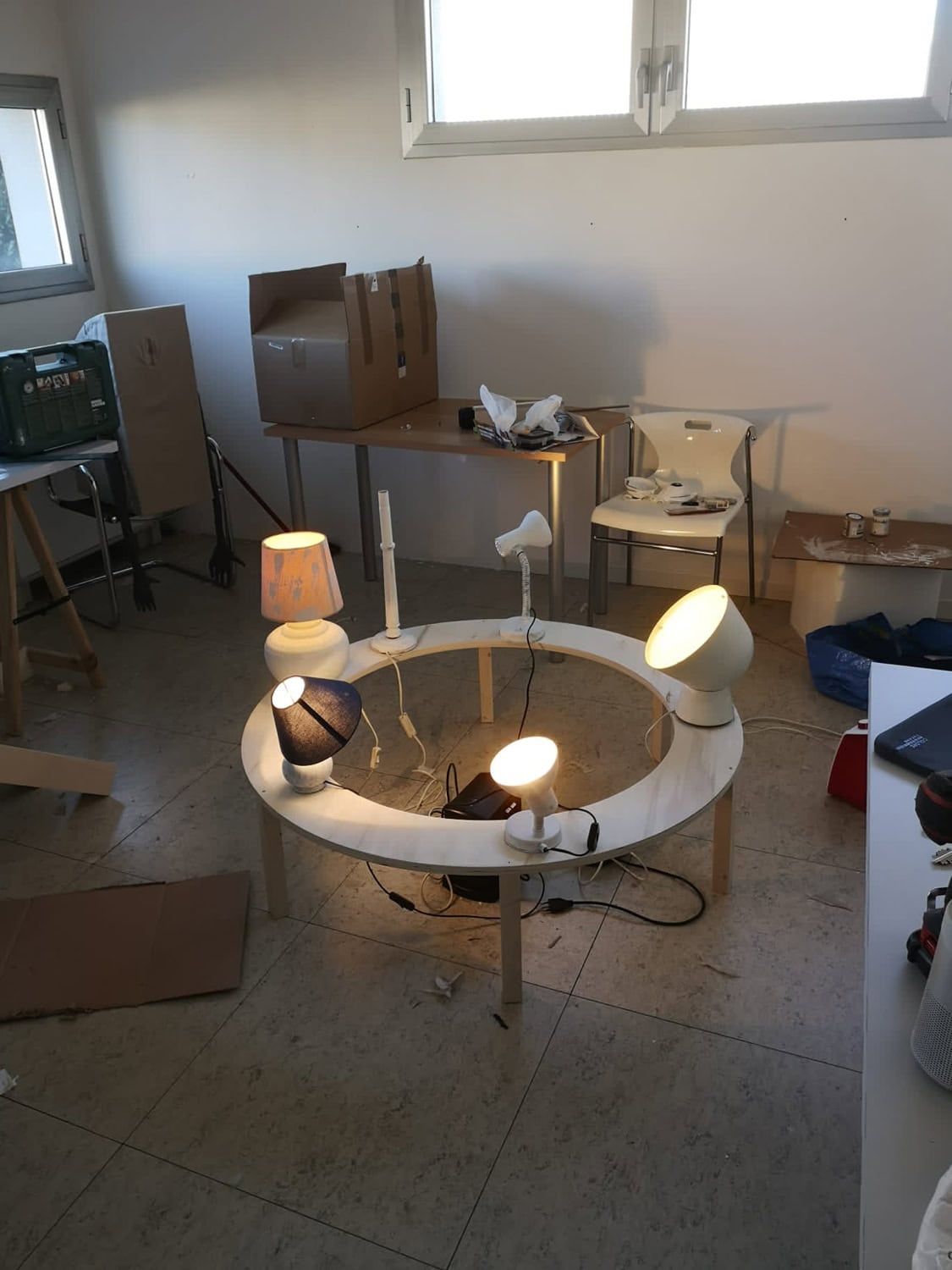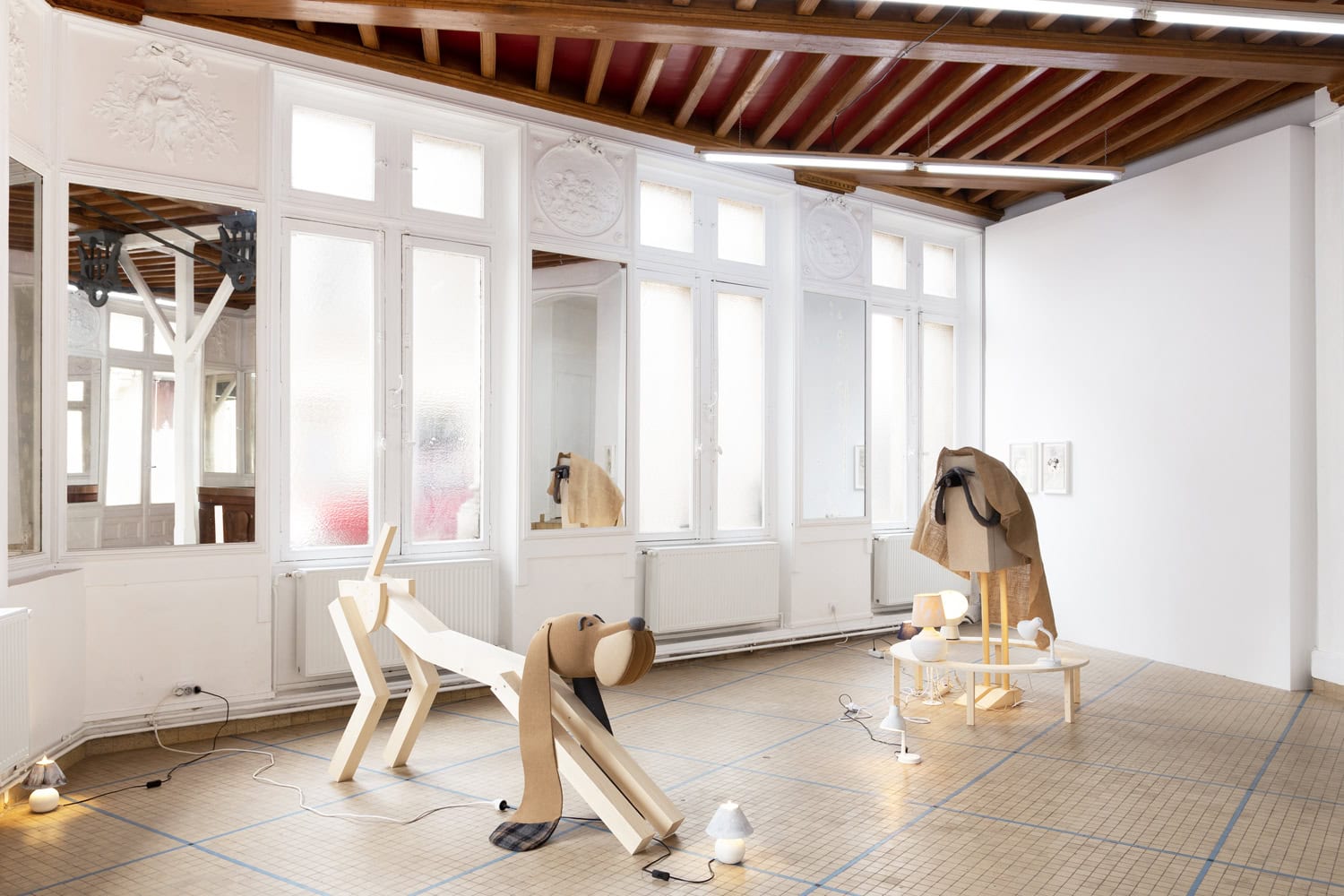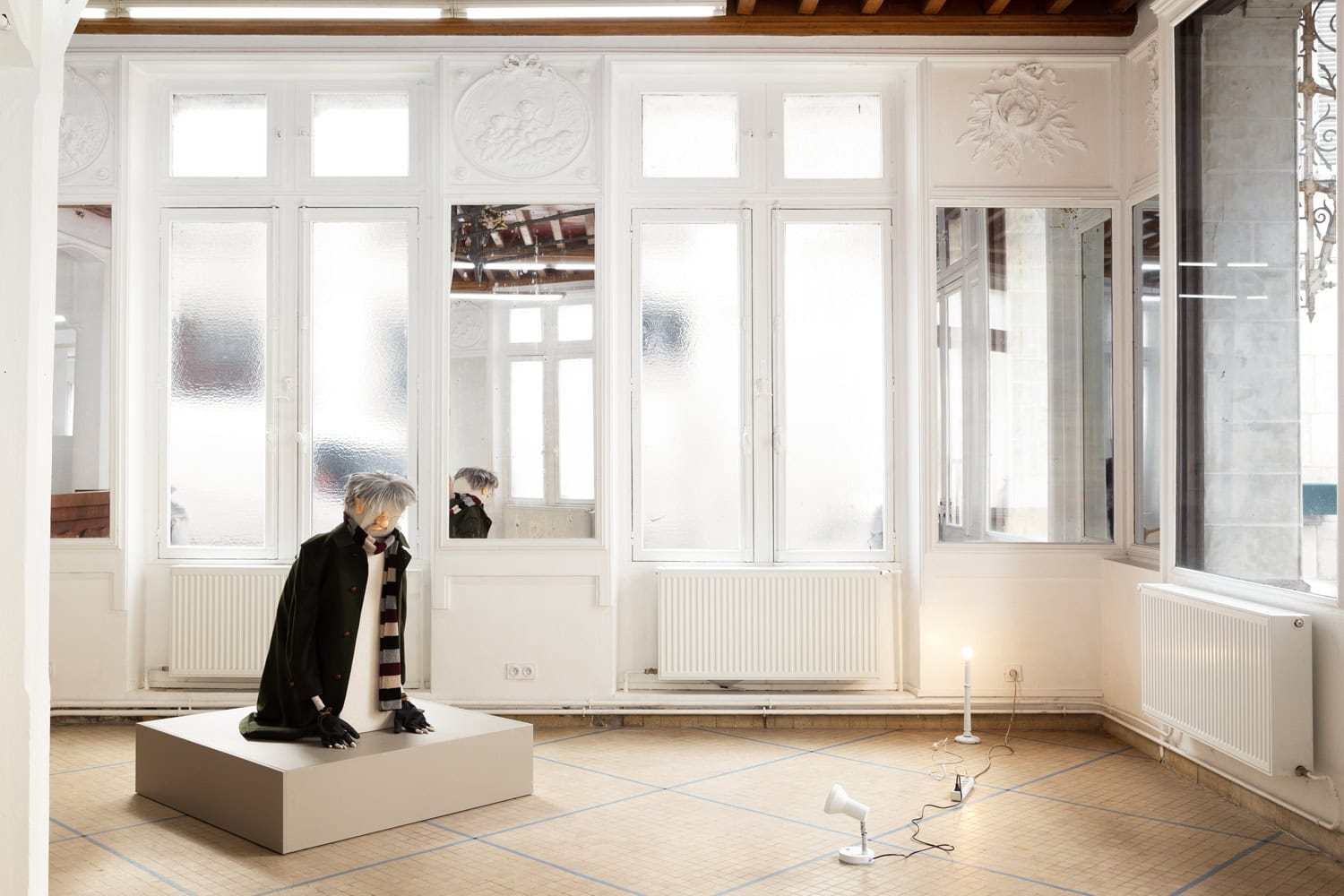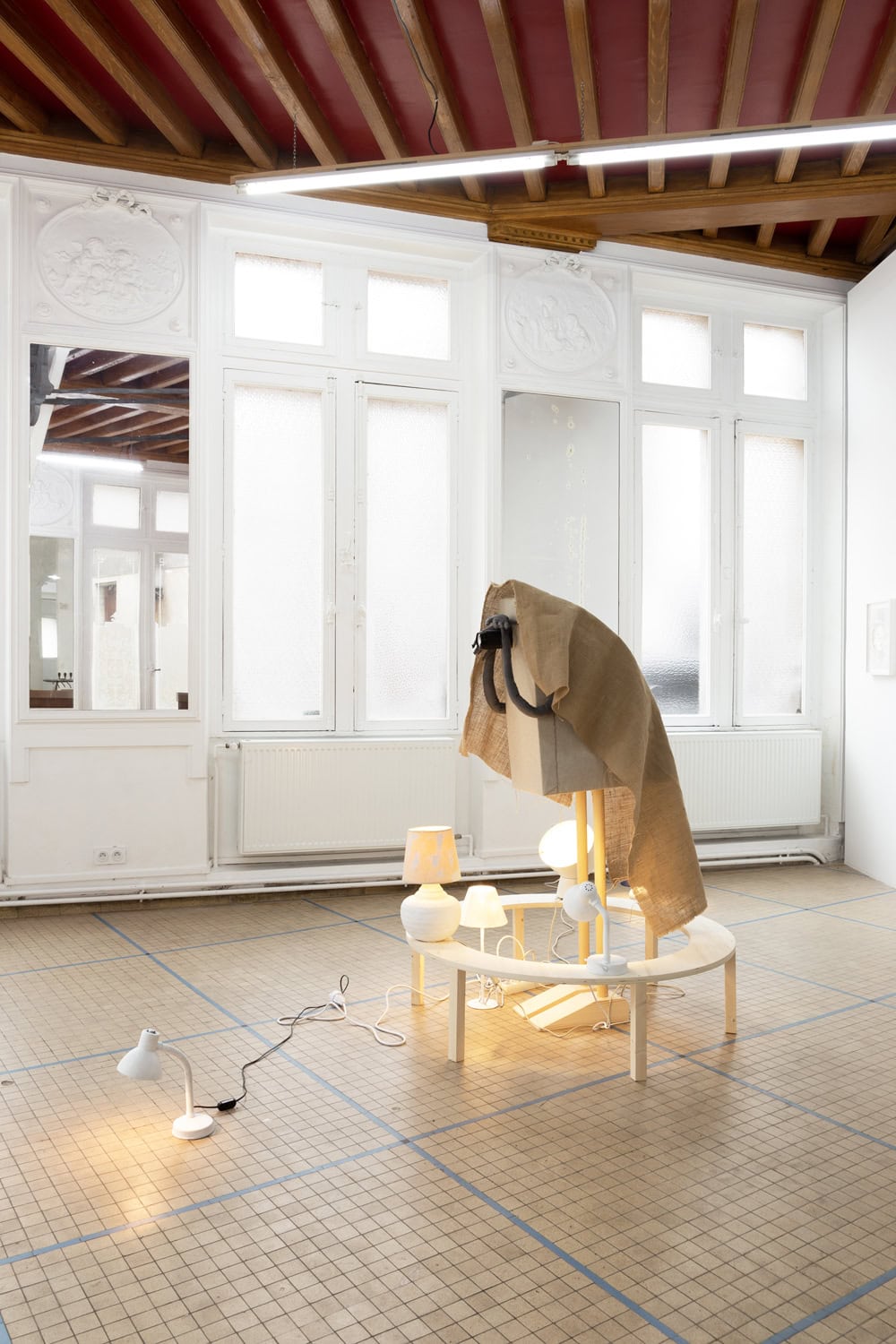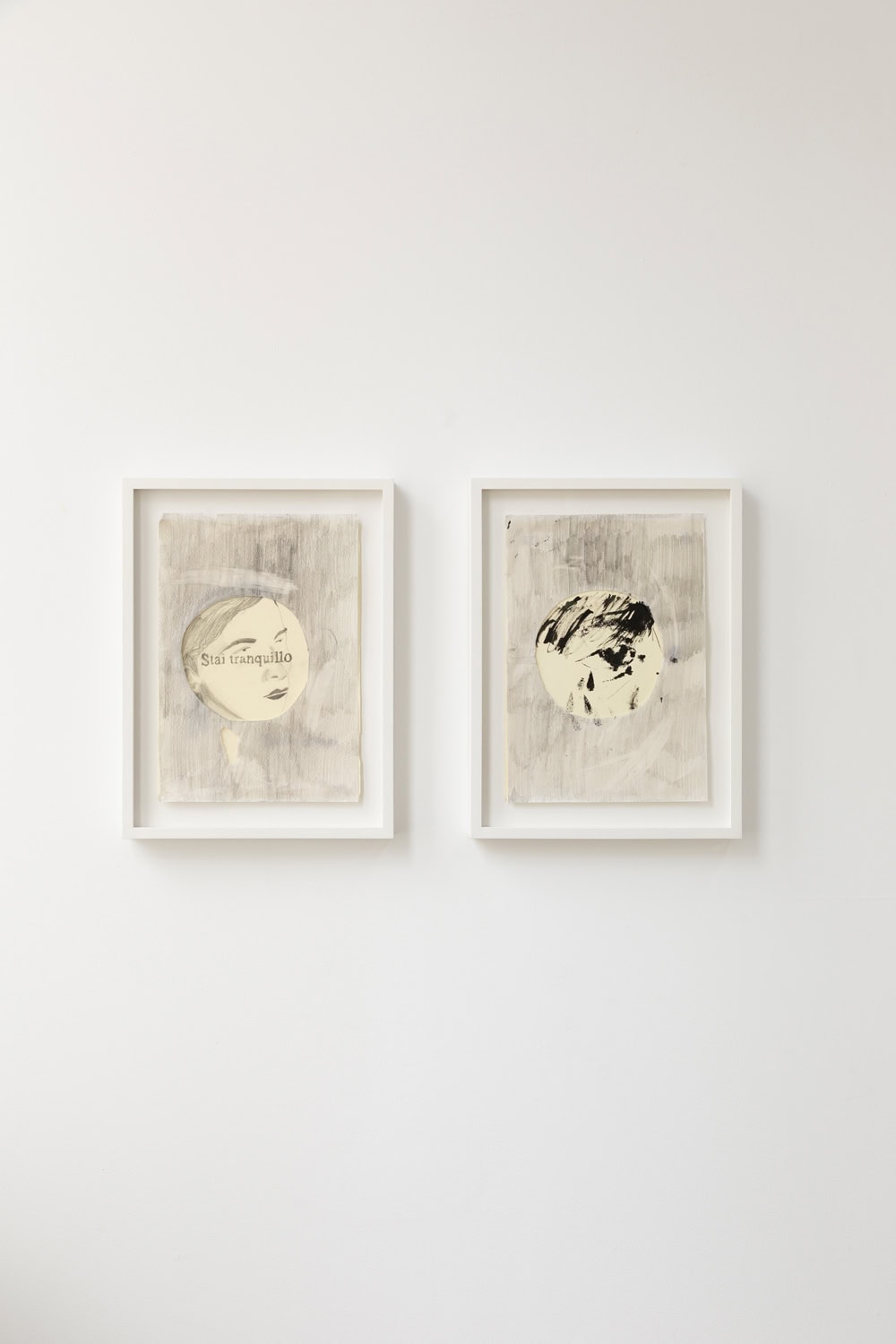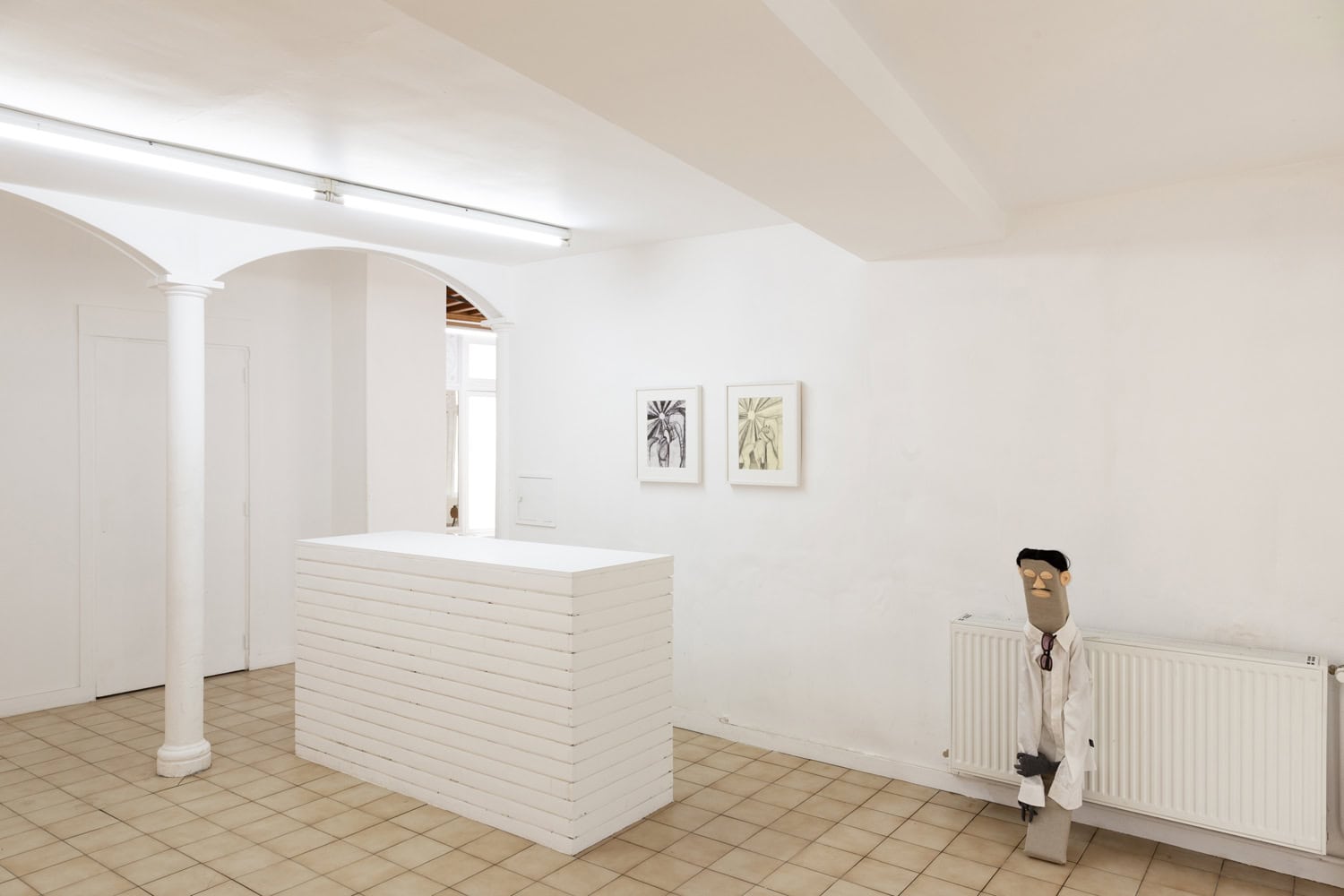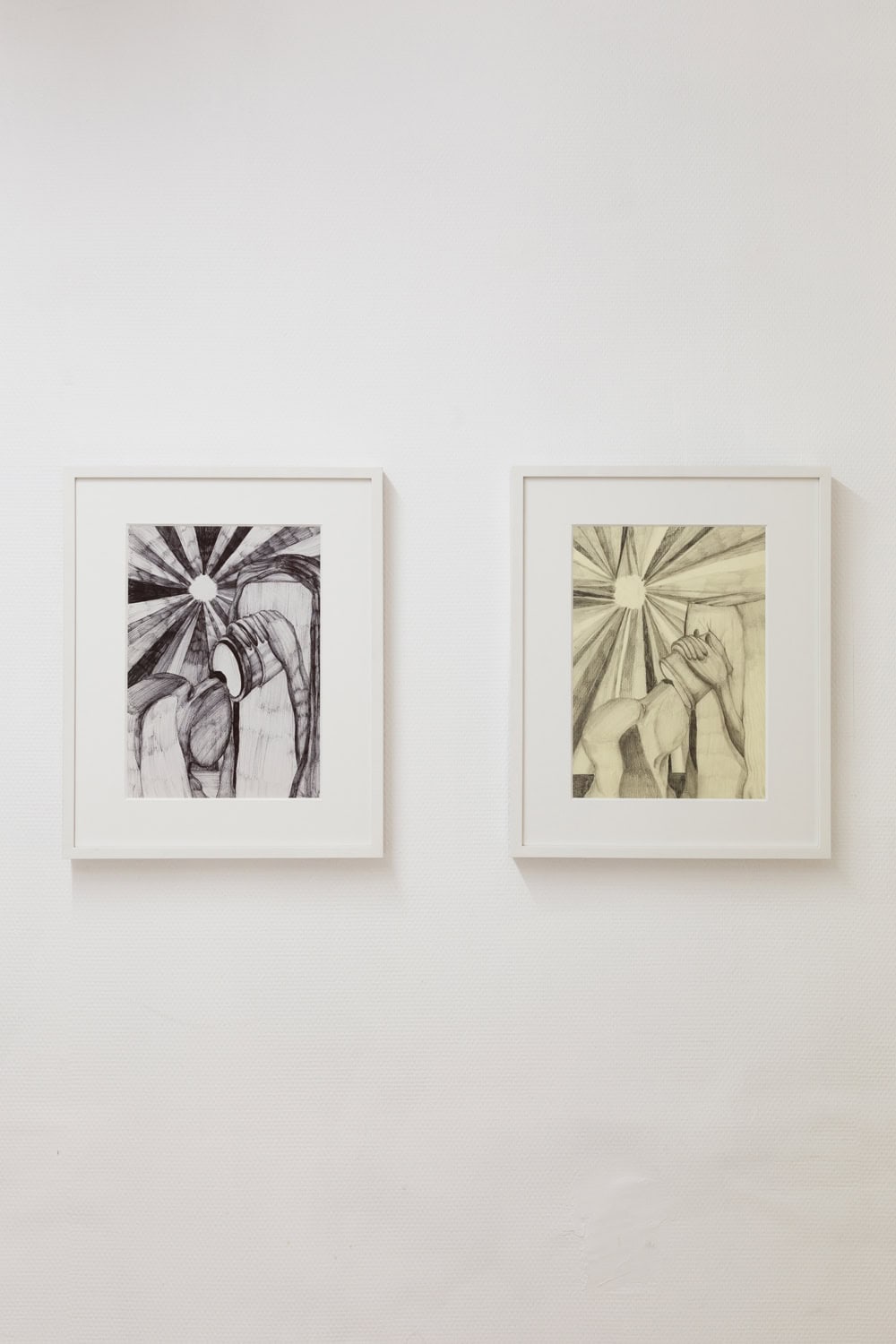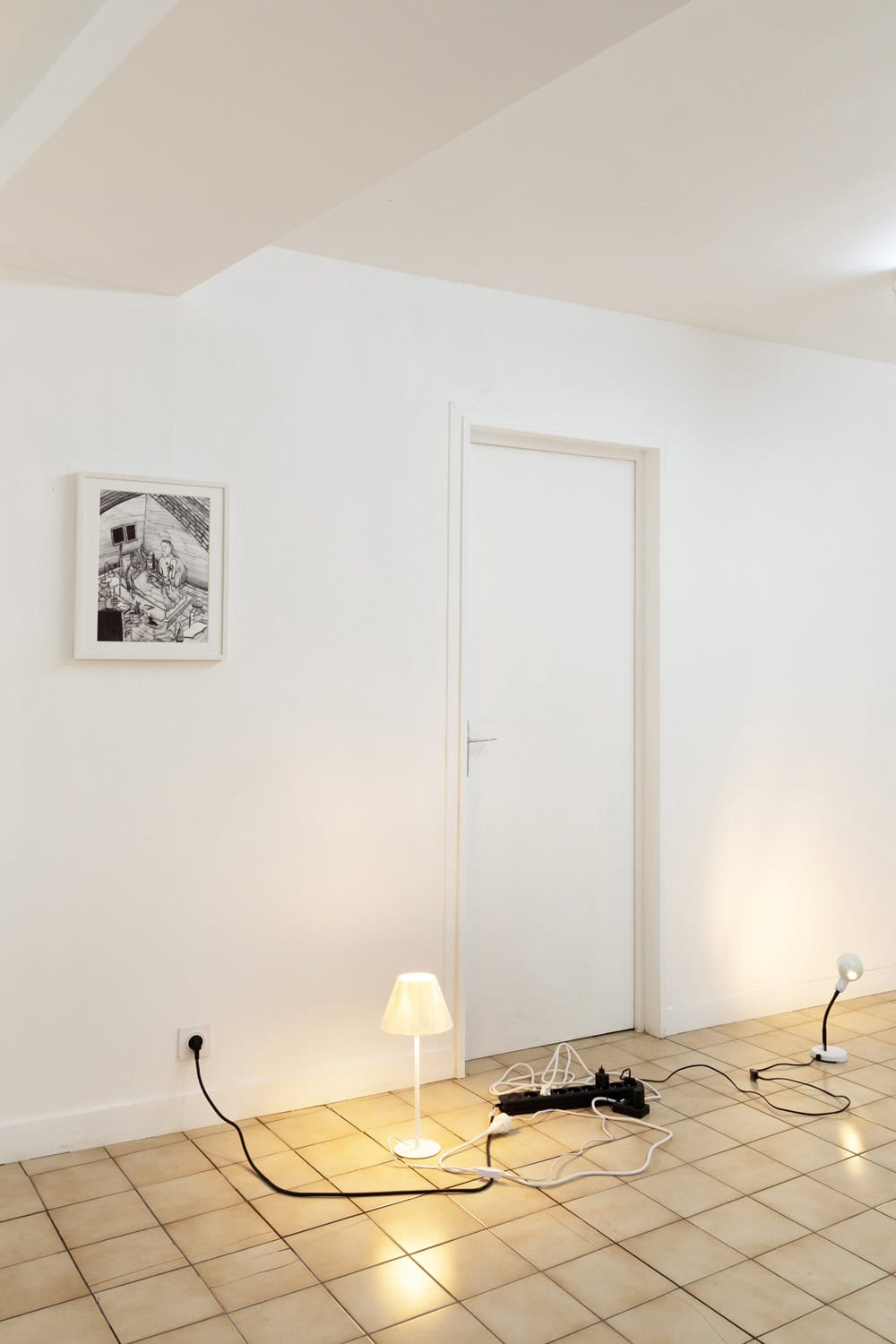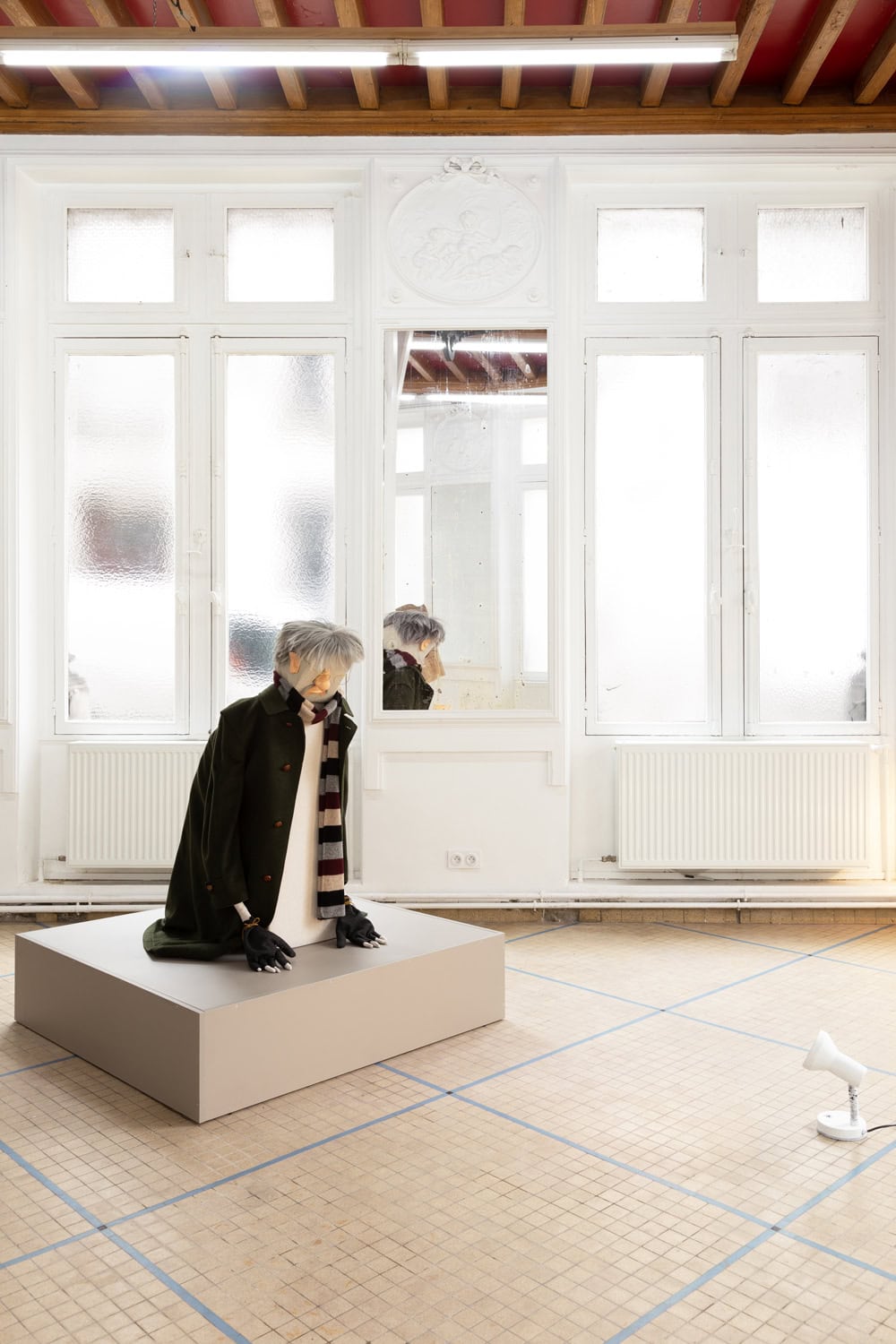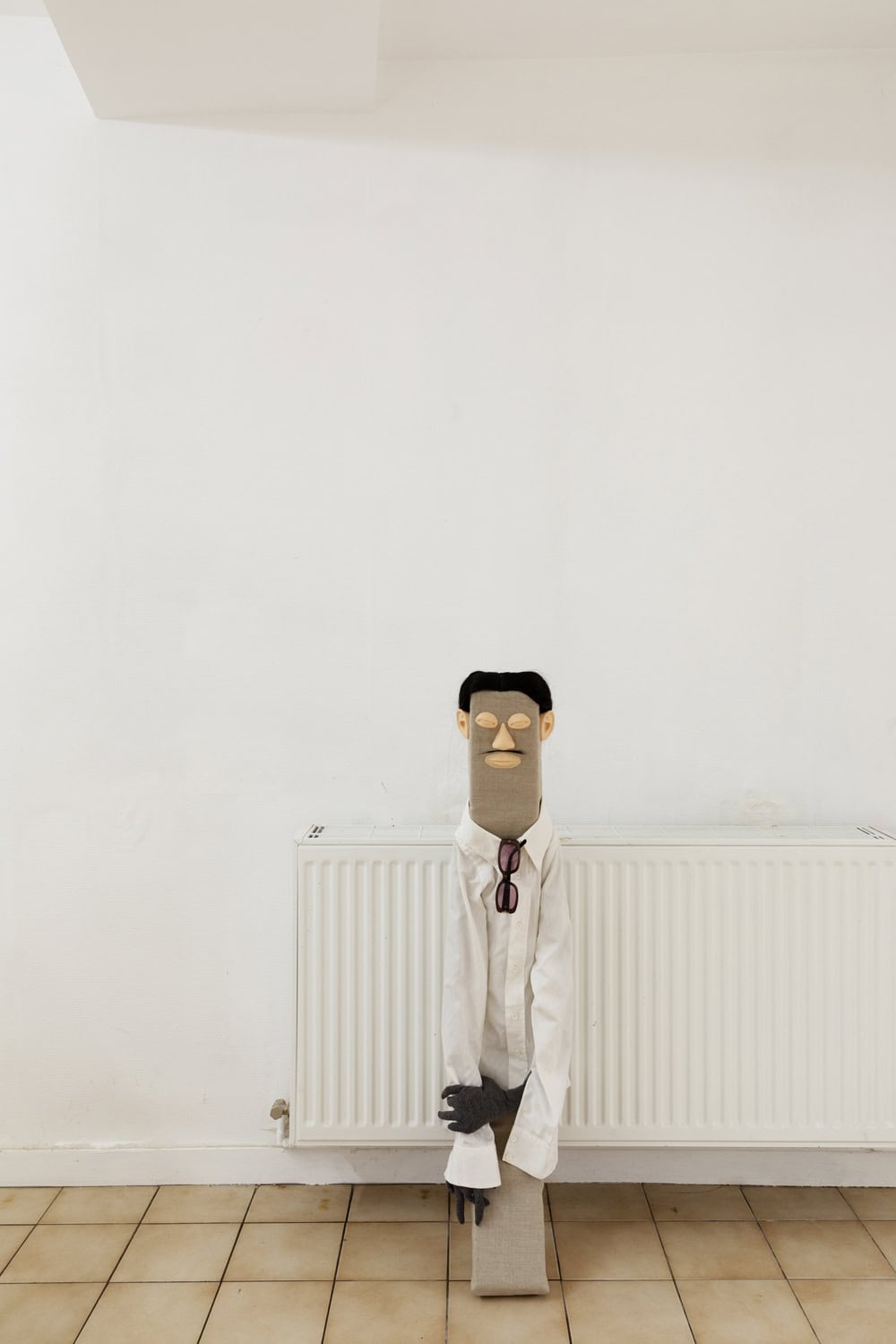The first thing I learned about Tonnerre is that it is a small French town with a big hole in the middle. It is a circular pool of unknown depth—a motionless mirror that prevents one from looking beyond. I do not know if there are answers to this little mystery, but I like to think that that hole is a shortcut to the foundations of the town—to everything that is there but cannot be seen.
Tonnerre means thunder in French, and I can’t help thinking of thunder as the irregular beat of a town that at times is there and at others disappears. Like a decadent Ithaca, it has become the impossible destination of all my travels—the last stop on a FlixBus pilgrimage I have never undertaken.
Francesco began this journey some time ago, long before leaving Milan to inaugurate his first French solo exhibition. He tells me about it over a glass of wine, not as good as the one he would later drink there, and introduces me to the characters that populate his imagination. I am confronted with the alter ego of Robert Walser, while in a corner the singer of Baustelle stops playing. Each sculpture is born as a portrait, which starts from what it knows to question what it may never know. Ambiguous faces of characters without past or future who look around and investigate their emptiness. Melancholic, transient, yet eternal frequenters of the moment they inhabit.
The abat jours in a circle evoke a domestic ritual that borrows something from transcendence. The dog bows, and returns: he always will. The old man, close to the warmth of the radiator, seems to wonder if this is all there is. While a shy and ambiguous character (whom I immediately recognise as my favourite) observes from afar the details of a reality he fears too much to approach. Looking through something is his way of hiding himself; to be always and only the subject of this observation, never the object (to love, without ever being loved).
I am not sure exactly what the title of the exhibition refers to. Perhaps I should ask Francesco before writing what I think. All I know is that it is not easy to look at things that work and feel that you have broken mechanisms inside. Who knows, maybe by interlocking aimless characters, they might mysteriously start working again.
Your ease doesn’t simplify things / your ease is not making it easier is Francesco De Bernardi’s first French solo exhibition at Café des Glaces, in Tonnerre (France). From the 18th of March to the 3rd of June 2023, it will be possible to visit the Milanese artist’s exhibition, tracing the history of the place that hosts it—once a café, hotel and ballroom. In the stratification of places and times, Francesco’s characters come to life as irresolute and contradictory inhabitants of everyday life. The artist’s practice is delineated precisely around these subjects, whom he observes moving through the world. Of his one hundred thousand characters, Francesco is one and none, but in all of them, he manages, for a few brief moments, to find a home—turning a small light on that corner of life.
Il verso delle cose (The verse of things) by Federico Nicolao:
What’s the meaning of things? How one must perceive them? One looks for them first, identifies them then discovers their relationship with the human being: from with the most inert to the most used from the farthest to those which we use so much that we forget their presence and colours.
After having realized we are always in their presence and having found them again, we move away from them a little, which is enough to make us consider them like distinct from what we are and we are amazed by their characters banal and extraordinary at the same time.
At the heart of Francesco de Bernardi’s work: there’s a constant interrogation of the acuteness of our connection to things, on the way they are built organized or fabricated.
Reflecting a long Milanese story which combines art, object, scenography, and narration, De Bernardi’s work has the ability to make us understand that feelings as well as things can break, join, paint, and fit.
What is an individual if not the complex interweaving according to which things and feelings coexist
Lazy but feverish, a simple energy is born from the artist’s ability to observe.
And without making do with the usual mechanisms of the world it surprises us, accompanies us, questions us, by mixing with their very functioning without hostility to any impropriety and sometimes in a marvellous fashion it’s open to surprise and non-fulfilment of a vast and incomprehensible which from birth to death, protects us or deceives us.
If the artist who introduces a sculpture chooses a this discretion to have it interpreted by space the reason is he wonders about the ability of space to let liven even magnify the feelings which gave birth to it and he asks himself from his first gesture what is the meaning of each presence.
Thus, at Café des Glaces in the small town of Tonnerre. (Which as its name shows could have been created by Jupiter tempestuously) by outlining characters and figures and becoming imbued by the atmosphere of the valley of Pagus Tornodurensis, three sculptures and a series of drawings appear in the rooms of a small independent art centre.
An old man, a dog, a mysterious observer…
Everything doesn’t revolve around melancholy, nevertheless, the three characters dimly lit, are perceived by viewers as being resilient like imbued with dreams in the air lost momentarily or permanently.
Maybe that’s why the Dog bows and evokes the idea of affectionate domesticity, whereas the Old man is grumpy reflecting on his past and becomes sombre.
The sincere and genuine relationship which enables to welcome the future is over, with the innocence of the annual nearly guilty of stirring memories the ghost lights of distant future still seem present.
Clinging to his monocular lens, the Worried man wished he could correct the perspective, but it’s feared that his look will end once more by producing pure illusions: a perception which breaks up with reality, which induces a vision of the world conditioned or erroneous, a vision which we like for its softness with which we manage to create.
There’s however in De Bernadi’s work a grace of being which grows precisely in the distance between a viewpoint which is always deferred (remains hidden and must be sought) and the multiple attempts to find another one, more bearable satisfied with reality. Even going wrong when deciphering generates a vision and none of us knows what the worrying man, the dog and the old man watch all the time. While the characters live between gladness and misunderstanding juggling between the desire for an easier life and that of putting up with all its difficulties, the viewer may find the spell and the joy of a secret point of view.
Francesco De Bernardi (1995) lives and works in Milan. His practice is rooted in the observation of everyday life, of common situations that provide the primary material the artist extrapolates in order to present it again, condensed into micro narratives or objects that evoke real life experience. His work is developed through the use of different media and materials, including texts, ceramics, artist draws mainly on his own background and autobiographical experiences, focusing in particular on the apparently banal and comical details of everyday life. The scenes and characters taken from reality show their weaknesses and contradictions, their irresolute side, concerning their personality, crushed and fed by hyperquestioning, hypochondria and the consequent melancholy, which characterises the artist’s gaze and production.
The Café des Glaces is an iconic building in downtown Tonnerre, known for its past as a café, hotel and ballroom. It has been, since Spring 2021, an artist-run-space founded and managed by a couple and duo of artists Haydée Marin & Camille Besson. A place of creation, residency and meetings. It is above all a place of sharing and conviviality anchored in the Tonnerrois, where invited artists, welcomed in residence, can address a public in the making, across cultural barriers. Their aim is to perform far from the metropolis without giving up anything to their requirements and their ambition is the perpetuation of the structure they have built. The Café des Glaces proposes an update of the artist-run-spaces model to exchange, produce and share simply and on a large scale, this never satiated appetite of newly asked questions with unexpected answers.
